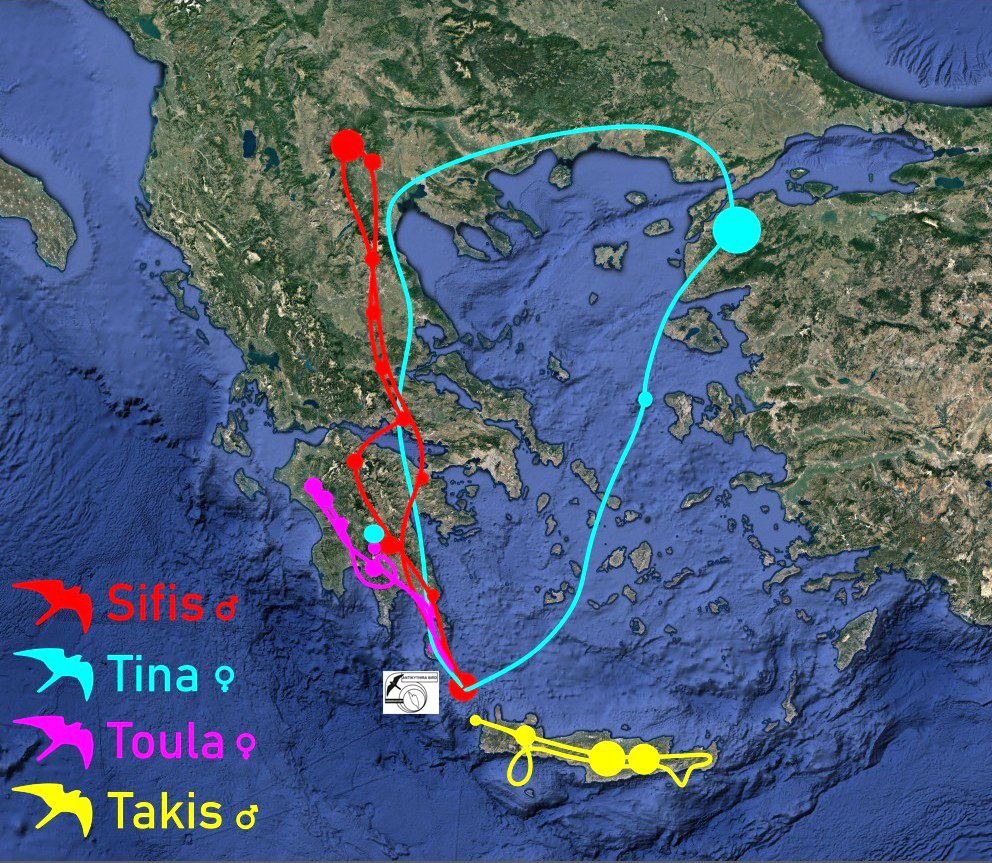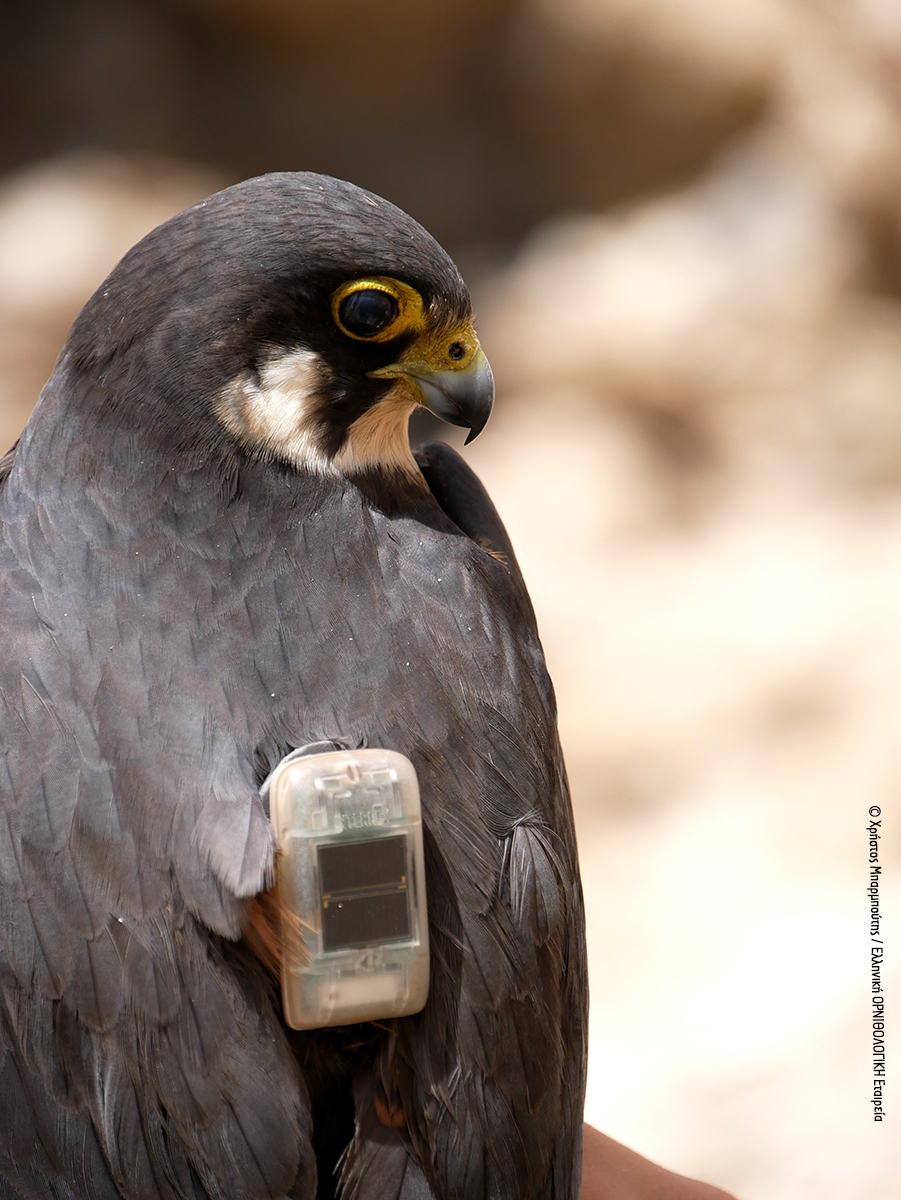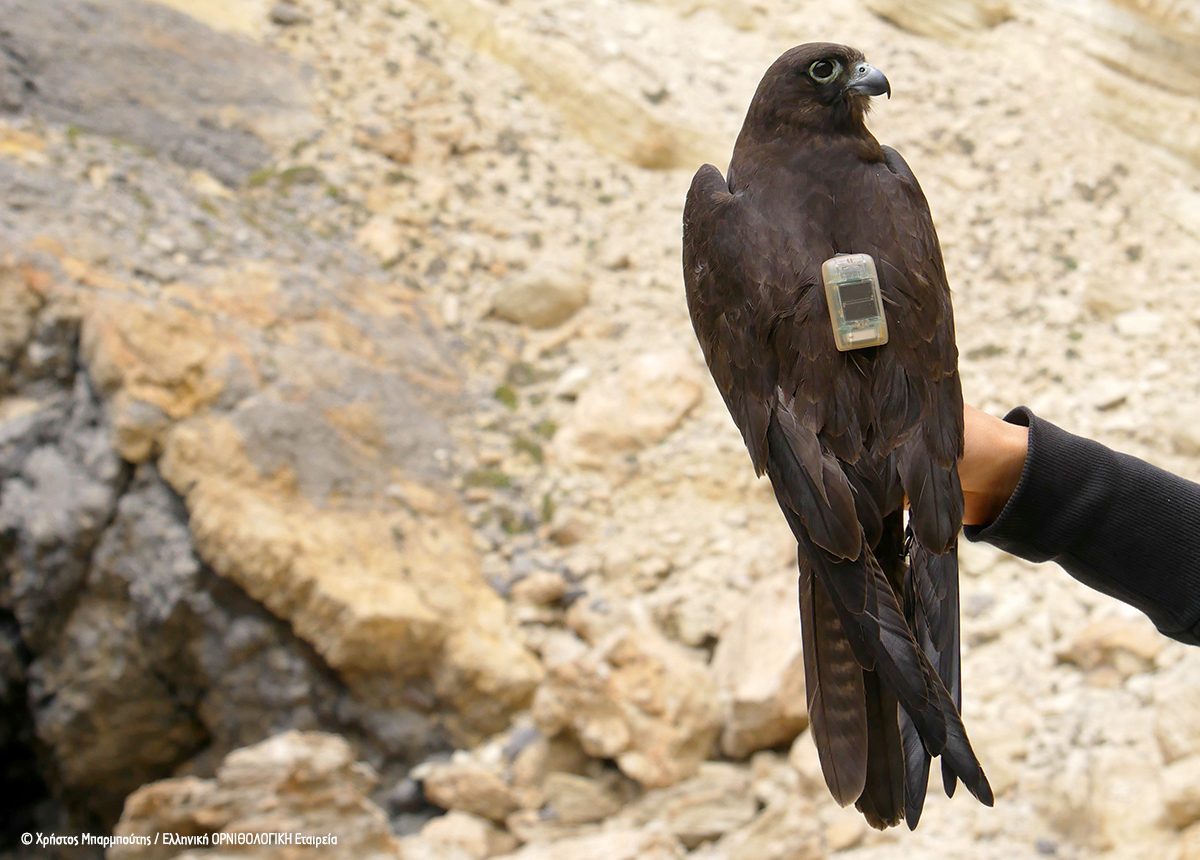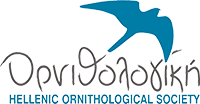The team of the Hellenic ORNITHOLOGICAL Society is implementing a monitoring project for the Eleonora's falcon, based in Antikythera island, where a significant colony of the species is hosted, during the pre-breeding period, i.e. the period from the arrival of the first migratory falcons at the nesting sites until the start of the breeding period.
The new project is a continuation of the actions implemented in the framework of the Natura 2000 Award-winning LIFE ElClima Project and is implemented in collaboration with the Biology Department of the University of Patras and the support of the Natural Environment and Climate Change Agency – N.E.C.C.A.
“Tina”, “Toula”, “Takis” and “Sifis”, four Eleonora's falcons breeding in Antikythera island and the adjacent islets, are the first birds that have already been tagged with satellite transmitters in the framework of the project. The telemetry data they will provide us, is expected to contribute to further understanding the ecological requirements of the species, during this very special period for their biological cycle.


Eleonora’s falcon, the falcon that lives like a seabird, is one of the most iconic birds of prey of the Greek avifauna. It overwinters in East Africa, especially in Madagascar, and after the end of the winter a long and difficult journey begins, with destination the coastal cliffs of islands and uninhabited islets of the Mediterranean Sea, where it nests. Having crossed thousands of kilometers over land and sea, the first Eleonora’s falcons arrive in Greece mid-April.
After having found their mate and a good nesting site, the older birds form loose colonies in early May, but until the start of the breeding season (mid-July) the "Pirates of the Aegean Sea" spend most of their time away from their colonies. Due to lack of food (flying insects) in the nesting sites, at that period Eleonora’s falcons hunt in long distances away, during the day and only a few of them return back to the colonies at night.

Thanks to telemetry data as well, it is well-known that, during the period from their return to Greece until the beginning of the breeding season, the Eleonora’s falcons spend more time inland than in the sea, so during this period they can be observed even in high mountains of the mainland, away from the coasts.
But what is not so well-known to the scientists is where exactly they go when they are away from their colonies, what type of habitats they choose, and whether there are areas with large concentrations of the species during this period.
The "signal" of Eleonora’s falcons with satellite transmitters can provide us with answers to these critical questions, while the telemetry data that will be obtained through the project, will contribute to a more effective conservation of the falcon-symbol of the Aegean Sea.



